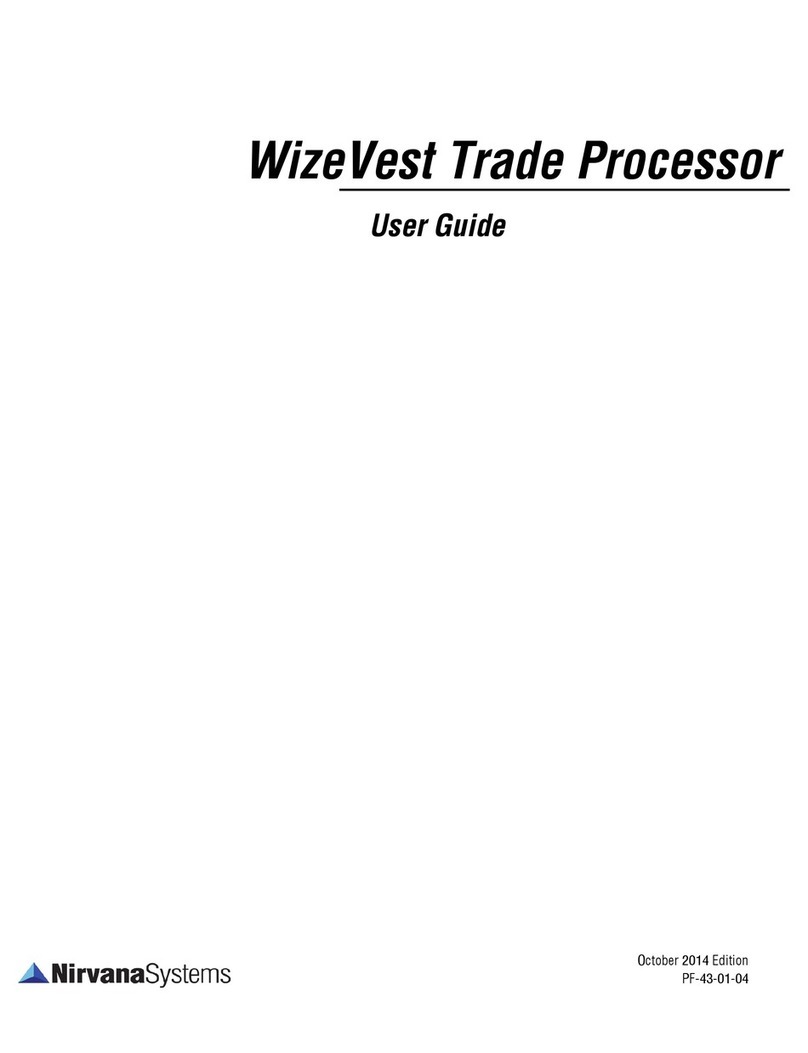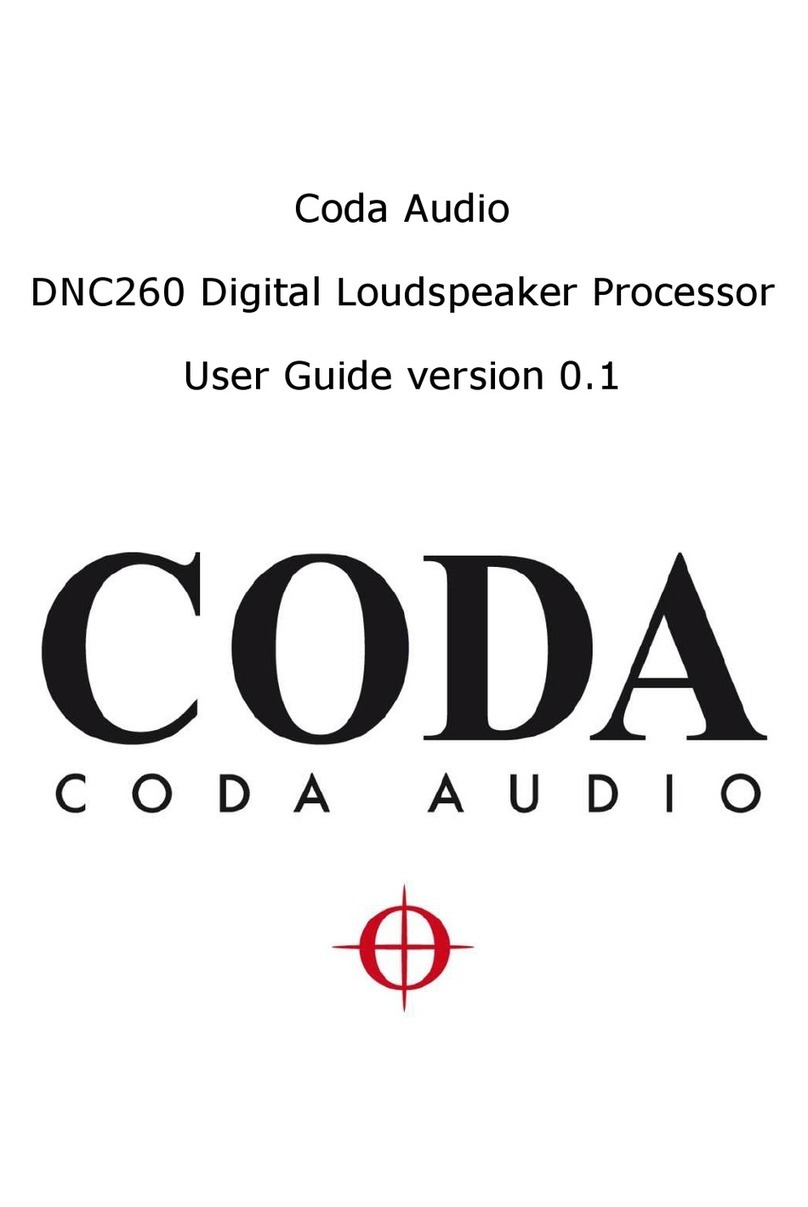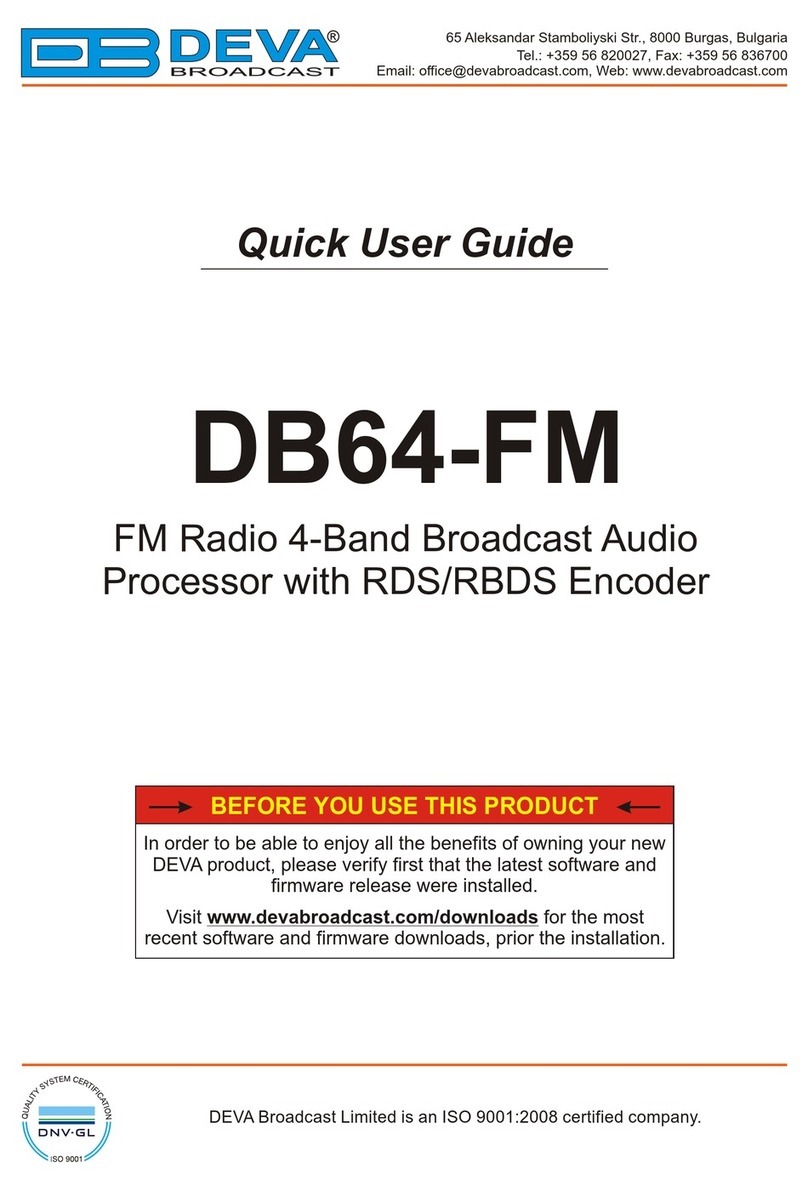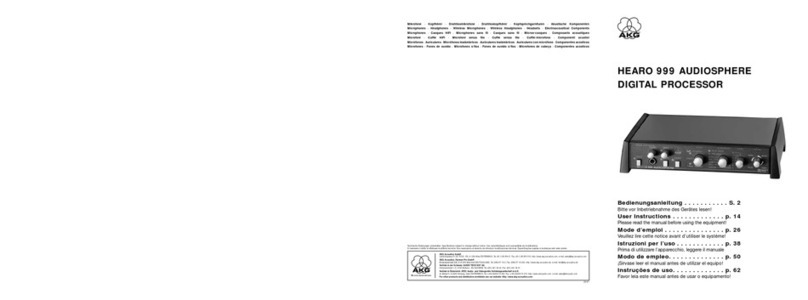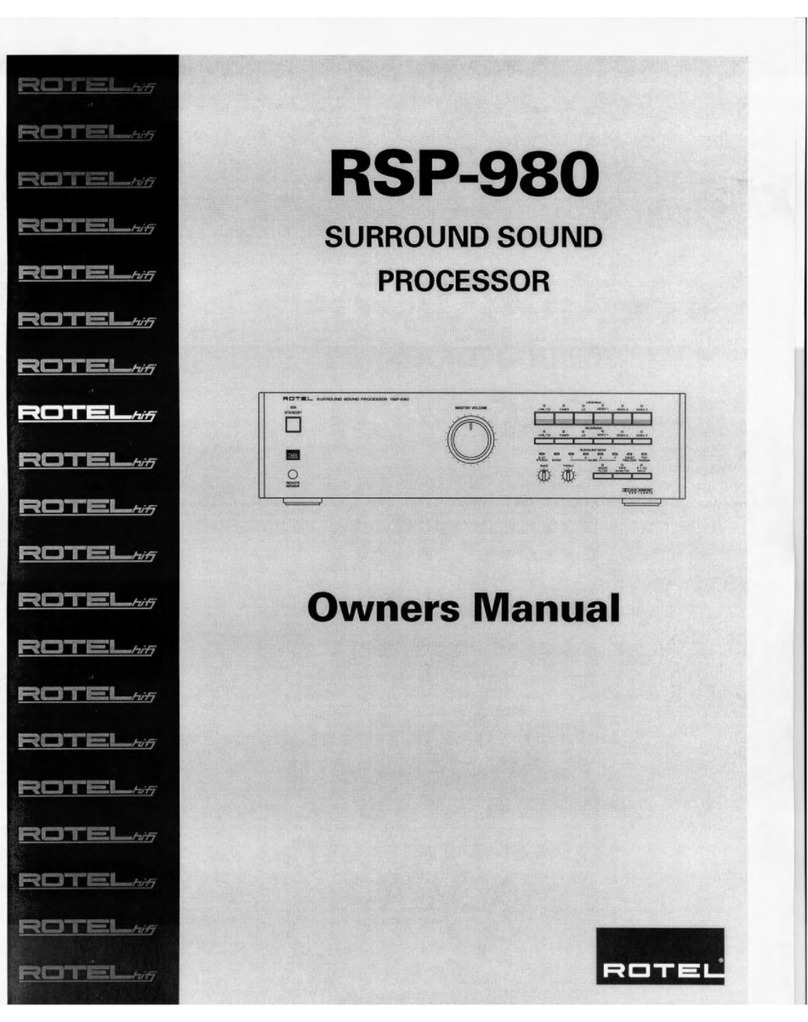DaySequerra MultiMerge2 User manual

MultiMerge2
+ NLC
5.1 Surround Audio Processor
User Manual

2
MultiMerge2 User Manual
Welcome
Thanks for purchasing the DaySequerra MultiMerge2. The DaySequerra MultiMerge2 enables
broadcasters to smooth the transition from stereo to 5.1 surround sound by providing viewers with a
24/7 surround sound experience. We design and build all of our DaySequerra products to be
completely reliable and easy to use, so you can concentrate on producing great sounding broadcasts,
not struggling with complicated equipment or difficult to use product manuals.
While the MultiMerge2 has been designed to be straightforward to use, we do suggest that you spend a
few minutes familiarizing yourself with the features and operational functions that are contained in this
manual.
DaySequerra has been building broadcast quality products since 1989. The technology
developed for the MultiMerge2, and all of our products, has evolved through a process of user
feedback, extensive listening, field-testing and careful refinement.
In the event that you encounter any technical or operational difficulties with this or any DaySequerra
product, please feel free to contact us at 856-719-9900. Our office hours are from 9 to 5 ET, Monday
Also, please remember to visit our website www.daysequerra.com for warranty registration and the
latest DaySequerra product information.
We have worked hard to ensure that your DaySequerra MultiMerge2 will reliably serve you for years to
come. With a modular design and upgradeable firmware, your new unit is easy to install and use right
out of the box.
We sincerely hope our products help you achieve a new level of excellence in your work!
David V. Day
and the DaySequerra Team
Day Sequerra 154 Cooper Rd. #902 W. Berlin, NJ 08091 Voice 856-719-9900 sales@daysequerra.com www.daysequerra.com
|
|
|
|
|

3
MultiMerge2 User Manual
Table of Contents
Important Safety Information
4
Rear Panel
13
Service Information
4
Programming Menu
15
Technical Specifications
5
System Menu
15
Introduction
7
MultiMerge Menu
20
Installation
8
Neural Loudness Control
21
Menu Tree
9
Presets
21
Front Panel and UI Controls
10
Faults
24
Meters
11
Firmware Update
25
Home Screen
12
Warranty
26
All rights reserved DaySequerra Corp. Copyright 2009.
All logos and trademark used herein are the property of their respective owners.
Specifications subject to change.
MultiMerge2 Revision A.
MultiMerge2 Key Features
•Simultaneous processing for 5.1 main and 2.0 auxiliary stereo inputs and loudness
control signal flows
•UpMix HD algorithm for near-discrete 5.1 performance from stereo
•Auto-UpMix provides full-time 5.1 output from mix of stereo and 5.1 content input
•Mute-less 5.1 pass-through to guarantee critical audio is never lost, such as center
channel dialog
•DTS Neural Loudness Control and ITU-R BS.1770/1 Loudness Measurement –
ensures CALM compliance
•EAS/CAP input for transmission of Emergency Alert messages
•Ethernet interface for loudness-compliance logging and field updates
•Optional HD/SDI input for 8 de-embedded audio channels from SDI group 1 or 2

4
MultiMerge2 User Manual
Important Safety Information
•Indoor use only. Not for use in wet or damp environments.
•Maximum Relative Humidity: <80%
•Class I Equipment (grounded type)
•Electrical rating: 100-120/220-240V~50-60Hz 25W max
•AC Mains supply voltage fluctuations are not to exceed +10% of the nominal voltage
•Operations temperature range -40°C to 70°C
•Maximum altitude: 3000m (9843ft)
•Equipment suitable for continuous operation
•Weight: 3.2kg (7lbs) equipment only
Important Note: Please connect your MultiMerge2 to an uninterruptible power supply (UPS) to
provide other protection against power surges and low-voltage conditions.
Service Information
The DaySequerra MultiMerge2 contains no user serviceable components inside the unit. Please
contact DaySequerra for repair and upgrade information. In the event that your unit needs to be
returned to the factory, contact us for a return authorization number. Please visit
www.daysequerra.com and register your new MultiMerge2 so we can keep you informed of the
latest hardware and software updates.
The lightning flash with arrowhead symbol is intended to alert the user to the presence of un-
insulated “dangerous voltages” within the product’s enclosure that may be of a sufficient level
to cause harm.
The exclamation point within a triangle is intended to alert the user to the presence of important
operating and maintenance instructions within the
product literature.
Exposed portions of the power supply assembly are
electrically live. To reduce risk of electric shock, the
power cord must be disconnected when the power
supply assembly is removed. For continued
protection against electric shock, a correctly wired
and grounded (earthed) three-pin power outlet must
be used. Do not use a ground-lifting adapter and
never cut the ground pin on the three-prong plug.
The ground terminal of the power plug is connected
directly to the chassis of the unit.

5
MultiMerge2 User Manual
Technical Specifications
INPUTS
3 AES-3 PCM inputs for 5.1 Surround
1 AES-3 PCM input for 2.0 AUX Stereo/EAS
1 AES-3/AES-11 input for external AES sync
1 HD/SDI Input with option
OUTPUTS
3 AES-3 PCM Outputs for 5.1 Surround
1 AES-3 PCM Output for main program Lt/Rt down mix
1 AES-3/AES-11 Output for external AES sync
1 HD/SDI Pass-through output with option
AUDIO INPUT & OUTPUT
INTERFACE
AES/EBU, 75 ohm, unbalanced BNC
HD-SDI input for SMPTE 259M, SMPTE 292M, SMPTE 424M, ITU-
R BT.656 and ITR-R BT.601 input with option
LOUDNESS MEASUREMENT
& CORRECTION
ITU-R BS.1770/1 Industry Standard Loudness Measurement
DTS Neural Loudness Measure
Leq (a), Leq(b), Leq(c) and Leq(m)
SAMPLE RATE
32 kHz to 96 kHz, 24-bit
LATENCY
38ms UpMix HD High Latency
0ms Lt/Rt DownMix
48ms DTS Neural Loudness Control
<6ms for Hardware Interface
GPIO
Opto-isolated DB-9 female connector
0-5VDC TTL
ETHERNET
10/100 Base-T for field software updates, logging and remote control
DIMENSIONS & WEIGHT
1 RU, 19” (482mm) W x 8” (203mm) L x 1.75” (44mm) H
7lbs. (3.2kg)
ENVIRONMENTAL
Convection cooled. Operating: 0 to 60 degrees C
REGULATORY
North America: Designed to comply with FCC Class A, Part 15
Europe: LV Directive 73/23/EEC and EMC Directive 89/366/ECC,
CE Mark (EN55022 Class A, EN55024)
RoHS and WEEE compliant
POWER SUPPLY
Dual redundant
Auto-sensing 100-240V, 50-60Hz
EMI suppressed male IEC320 connector
OPTIONS
HD/SDI input for 8 de-embedded audio channels from SDI group 1
or 2
WARRANTY
Three years, limited parts and labor
NOTES
[1] Does not include added latency of any options
*Specifications are subject to change without notice to upgrade the performance of our products.

6
MultiMerge2 User Manual
FCC Part 15 Regulatory Statement
This equipment has been tested and found to comply with the limits for Class A digital device pursuant
to Part 15 of the FCC Rules. These limits are designed to provide reasonable protection against
harmful interference when the equipment is operated in a commercial environment. This equipment
generates, uses, and can radiate radio frequency energy and, if not installed and used in accordance
with the instruction's manual, may cause interference to radio communications. Operation of this
equipment in a residential area is likely to cause interference in which case the user will be required to
correct the interference at their own expense. The user is cautioned that changes and modifications
made to the equipment without approval of the manufacturer could void the user's authority to operate
this equipment. The user should use only shielded and/or grounded cables to combat sources of
interference.
Environmental Preservation Efforts
This equipment has been designed and built by DaySequerra corporation to give many
years of trouble free service and is backed by our three year warranty and commitment
of providing the best customer support. When the time comes to retire your product
from service, it should be disposed of in accordance with local codes or ordinances. Do
not discard with household or commercial waste.
DaySequerra products are manufactured with the environment in mind.
The directive on the restriction of the use of certain hazardous substances in electrical
and electronic equipment (2002/95/EC) restricts the use of six specific hazardous
materials in the manufacture of various types of electronic and electrical equipment.
Following this directive prevents these toxic substances from entering our environment
after disposal.

7
MultiMerge2 User Manual
Introduction
The DaySequerra MultiMerge2 enables broadcasters to smooth the transition from stereo to 5.1
surround sound by providing viewers with a 24/7 surround sound experience. With MultiMerge2 inline,
5.1 original content is passed unaffected to the viewer while original stereo content is UpMixed to a 5.1
surround sound image providing the viewer with a consistent surround experience. The transition
between 5.1 and stereo occurs seamlessly without the need of operator intervention. By offering a 24/7
5.1 signal, AC3 metadata will never need to transition between 2/0 and 3/2 mode avoiding the risk of
audio ‘clicks’, ‘pops’, and dropouts.
The DTS-Neural Audio patented approach to stereo UpMix avoids taking ‘artistic license’ with content
by placing audio exactly where it would be heard in a professional LEDE (Live End Dead End) listening
environment. For example, mono or pan-pot stereo will image in front of the listener where as stereo
containing depth information, or LtRt encoding, will surround the listener.
The MultiMerge can be used in combination with the DTS-Neural Surround DownMix to in order to pass
5.1 through stereo only facilities thus, eliminating the need for costly Master Control upgrades.
Broadcasters need a solution to effectively measure, and ultimately control the abrupt changes in
loudness that sends viewers diving for their remote controls during commercial breaks and action
scenes. The MultiMerge 2 + NLC surround loudness control simultaneously measures the perceived
loudness of 5.1 surround program audio along with 2.0 auxiliary stereo using the industry-standard ITU-
R BS.1770/1 loudness measure or the DTS-Neural Loudness Measure (NLM) algorithm.
MultiMerge 2 plus Neural Loudness Control uses the proprietary DTS-Neural Loudness Control, an
advanced loudness-leveling algorithm, to apply the appropriate gain or attenuation to maintain the
broadcaster-defined loudness level. The resulting audio has a naturally open, dynamic quality without
the annoying side-effects of traditional energy-based volume management solutions.
Loudness is a perceptual property of an audio signal when it is reproduced acoustically. It is a complex
non-linear function of amplitude, frequency and bandwidth. Current audio level meters measure the
level of audio signals expressed as the amplitude of the signal - either the RMS (root mean square)
voltage of an electrical signal or the sound pressure of an acoustical signal. Neither of these
measurements, although widely accepted, provides accurate indications of how viewers will perceive
the loudness of the audio programming.
The DTS NLM algorithm uses a perceptual model of human hearing to more accurately detect spectral
and density differences, inter-channel relationships and temporal overlaps in any audio content,
resulting in a more accurate perceived loudness measurement over time. This proprietary algorithm
was developed by after extensive research into human hearing and perceived loudness.
To improve system reliability and up-time, MultiMerge 2 + NLC uses a robust DSP-based processing
platform rather than a PC-based approach to completely avoid broadcast disruptions caused by
operating system lockups. An Ethernet interface provides long-term logging and field software updates
capability. An optional factory-installed HD/SDI module will allow for measurement of 8 channels of
program audio from group 1 or group 2 with user specified mappings within the group. A set of user-
definable alarms can alert an operator of input loss, signal clipping and high or low signal levels
referenced to the desired loudness level.
When MultiMerge 2 + NLC is used ahead of an AC3 (Dolby Digital) transmission, the target loudness
level will also match the Dial-norm metadata information, thus providing consistent, enjoyable audio for
all viewers.

8
MultiMerge2 User Manual
Installation
Immediately upon receiving your MultiMerge2, please make a careful inspection for any shipping
damage. If damage is found or suspected, please notify the carrier at once and then contact your
dealer. MultiMerge2 is shipped in one carton, which contains: the MultiMerge2 unit, an AC power cable,
and this Users Manual.
We strongly encourage you to save the shipping carton and shipping materials supplied with your
MultiMerge2. They are specially designed to properly protect your MultiMerge2, and in the event that
you need to return it for service, only these OEM shipping materials can ensure its safe return to our
factory.
We provide a limited 3-year warranty on all of our products; however, if you don’t register your unit, it is
impossible for us to contact you to notify you when important software upgrades become available.
Please take a few minutes to complete the warranty registration form on our website,
www.daysequerra.com.
Rack Mount Installation
The MultiMerge2 chassis has four rack mounting holes and has been designed to fit in a standard 1RU
space. Plastic ‘finishing’ washers are recommended to protect the painted surface around the mounting
holes. Locate the air vents on each side of the unit, and be sure to keep them clear so the unit may
have adequate ventilation.
Power Connection
The AC power cable supplied with MultiMerge2 must be connected from the IEC320 power entry
module to an AC mains outlet with a functional earth ground connection. For protection against electric
shock and electro-magnetic interference, do not plug the power cable into a ground-lifting adapter or
remove the cable’s grounding pin. If in doubt, please consult a qualified electrician.
Please connect MultiMerge2 to an uninterruptible power supply (UPS) to protect against power
surges and low-voltage conditions. MultiMerge2 may be combined with other devices on the output
of the UPS as long as the total load is within the UPS’ capacity. Consult your UPS manual for details.
MultiMerge2 will automatically power up when AC power is applied. If AC line power is lost or
momentarily interrupted, MultiMerge2 will revert to its previous state.

9
MultiMerge2 User Manual
Menu Tree
Figure 1. MultiMerge2 Menu Tree

10
MultiMerge2 User Manual
Front Panel Controls and Indicators
Figure 2. Front Panel Controls and Indicators
1. LED Bargraph Input/Output Meter for Surround 5.1 and Stereo 2.0
2. Status Indicator for Alarm, LED Bargraph Input and Output Meters, and EAS
3. Vacuum Florescent Display
4. Rotary Encoder Knob
5. Navigation Buttons
User Interface Display and Controls
VACUUM FLUORESCENT DISPLAY - A Multi-function display will indicate current status of the unit
and programming menus.
SELECTION KNOB - A stepping rotational knob is used to select values while in the menu system. To
enter the menu, simply rotate the knob in any direction while MultiMerge2 is on the HOME screen.
ENTER KEY - Used to enter a menu or confirm a selection.
HOME KEY - A press of this button will return MultiMerge2 to the home screen or enter home screen
selection mode.
BACK KEY – This key will return to a previous menu, or if you are entering a value, exit the field and
return the value to the last programmed state.
HEADPHONE JACK– Accepts any headphone or monitor that has a 3.5mm stereo mini-jack
connection. Volume control is software based, adjusted within the home screen selection mode.
1. 2. 3. 4. 5.

11
MultiMerge2 User Manual
Meters
INPUT/OUTPUT LEVELS - Eight 10-segment multi-colored LED meters display the audio level for
each channel of the inbound and outbound audio stream.
Figure 3. LED Meters on Multimerge 2
INPUT LEVELS – LED display shows current amplitude of input signal from
-60dB to 0dB across all active channels. Unused channels will not light the display.
L - Left (AES Input 1) Ls - Left Surround (AES Input 5)
R - Right (AES Input 2) Rs - Right Surround (AES Input 6)
C - Center (AES Input 3) L - Stereo Left (AES Input 7)
LFE - Low Frequency (AES Input 4) R - Stereo Right (AES Input 8)
OUTPUT LEVELS – LED display shows current amplitude of output signal from
-60dB to 0dB across all active channels. Unused channels will not light the display.
L - Left (AES Input 1) Ls - Left Surround (AES Input 5)
R - Right (AES Input 2) Rs - Right Surround (AES Input 6)
C - Center (AES Input 3) L - Stereo Left (AES Input 7)
LFE - Low Frequency (AES Input 4) R - Stereo Right (AES Input 8)
Status Indicators
ALARM - Red LED indicator illuminates when an alarm has been triggered
INPUT METER - Green LED indicator illuminates when Multimerge 2 is
displaying an inbound signal on the LED Bargraph
OUTPUT METER - Green LED indicator illuminates when Multimerge 2 is
displaying an outgoing signal on the LED Bargraph
EAS ACTIVE - Red LED indicator illuminates when Multimerge has an active
EAS

12
MultiMerge2 User Manual
Home Screen
Figure 4. Home Screen on MultiMerge2.
When you power on MultiMerge2, the display should look similar to the one pictured in Figure 4. Each
field is dynamic and will show status or configured settings. Pressing the HOME key again while at this
screen enters home screen selection mode that allows quick access to key functions.
1. Measured Short Term Combined Average of 5.1 Surround
2. Read-Only 5.1 Surround preset indicator
3. Selected Neural Loudness Control target level
4. Measured Short Term Combined Average of 2.0 Stereo
5. MultiMerge menu icon
6. Neural Loudness Control menu icon
7. LED Bargraph Meter Input/Output indicator
8. Read-Only 2.0 Stereo preset indicator
9. Industry Standard Preset indicator and Target Level adjustment

13
MultiMerge2 User Manual
Rear Panel
Figure 5. Rear Panel
AES INPUTS - Four 75ΩBNC connectors will accept an AES3 digital audio stream with 1 AES-3/AES-
11 input for external AES sync and 1 AES-2 PCM input for EAS/CAP. (1 HD/SDI Input is available as
an option)
•1/2 - Left and Right Channel
•3/4 - Center and LFE
•5/6 – Left and right Surround
•7/8 – AUX/EAS
AES OUTPUTS - Four 75ΩBNC connectors output the AES3 digital audio stream with 1 AES-3/AES-
11 output for external AES sync (1 HD/SDI Pass-through output with option)
•1/2 - Left and Right Channel
•3/4 - Center and LFE
•5/6 – Left and right Surround
•7/8 - Stereo
AES SYNC - Two 75ΩBNC connectors that allow MultiMerge2 to receive an AES REF or DARS
clock signal from an external source and pass it on to other devices.
The AES-3id-1995/SMPTE 276M standard dictates a 75Ωunbalanced connection and requires proper
termination. The termination should occur at the destination of the signal (that is, on the inputs to
Multimerge 2). If the loop-through BNC connectors are not feeding additional equipment, terminate
each of these with a standard 75Ωterminator. Like other inputs, HD/SDI signal should be terminated.
HD/SDI - Optional (SMPTE 292M/229M) with measurement and mapping of all 16 SDI audio channels
ALARM – A Female DB-9 connection that allows MultiMerge2 to be monitored externally.
DB-9 Female Port
on MultiMerge2 Rear Panel
Pin
Signal
1
Output Relay 1 N.O.
2
Relay 1 Common
3
No Connection
4
No Connection
5
No Connection
6
Output Relay 2 N.O.
7
Relay 2 Common
8
No Connection
9
No Connection

14
MultiMerge2 User Manual
Output 1: Relay 1 is Normally Open. Upon a hardware failure (i.e. Power Supply or Internal
Communications Failure), the relay will close. When the failure is remedied, the relay will open.
Output 2: Relay 2 is Normally Open. Upon an AES lock loss failure, this relay will close. When
the failure is remedied, the relay will open.
Input 1: Toggle 5.1 output mode value
Input 2: Toggle 2.0 ST output mode value
Input 3: Toggle UpMix mode
Input 4: Triggers EAS Mode
NETWORK - Used for logging or to update MultiMerge2’s firmware. To connect directly to a PC without
use of a network switch or hub, a crossover cable is required. Firmware updating is accomplished via
UDP Port 44600. Please refer to the MultiMerge2 Firmware Update section of this manual for more
details the update procedure.
Power Supply – Dual redundant power. Auto-sensing 100-240v, 50-60Hz
PSU 1 / PSU 2 - IEC320 port to connect to AC Mains. The internal power supply is auto switching and
will work on 120VAC-60Hz or 240VAC-50Hz electrical power systems with a maximum total current
draw of 25W (>.25A 120VAC or >.15A 240VAC).
Please connect MultiMerge2 to a properly grounded uninterruptible power supply (UPS) to
protect against power surges and low-voltage conditions. MultiMerge2 may be combined with
other devices on the output of the UPS as long as the total load is within the UPS’ capacity. Consult
your UPS manual for details.

15
MultiMerge2 User Manual
Programming Menu
If AC line power is lost or momentarily interrupted, MultiMerge2 will revert to its previous state.
To enter the programming menu, press the ENTER button while at the HOME screen. The ENTER
button will navigate to the selected sub menu or enter the value selection mode for the selected option.
Press the BACK button will navigate to the previous menu level or revert the current value to its last
stored state.
System (Menu Function and Description)
Figure 6. System Menu Screen Display
From the Home Screen press ENTER to enter the System Menu. The main System Menu is
demostrated in Figure 3. Press BACK or HOME to return to the Home Screen. MultiMerge 2’s main
system functions are selectable from within this menu.
Input / Output
Figure 7. System Menu Screen Display
Audio Input – defines the Audio Source (AES, or an optional HD-SDI 1-8, 9-16 input). If the HD-SDI
option is not present only AES will be available in this submenu.

16
MultiMerge2 User Manual
Audio Output – A submenu that defines the AUX Output Source for AES 7/8 to display either AUX or
the DownMix LtRt.
Figure 8. Audio Output Screen Display
Aux Output Source – defines the source of AES 7/8. Selecting AUX will pass AES 7/8 onto this
channel. Selecting DownMix will pass the watermarked LtRt from DownMix onto AES 7/8
Final Limiter – Enables and disables the final limiter (Default: Enabled)
Final Limiter Ceiling – Allows NLC5.1ST to reduce the level of output stream (0dB to -20dB)
Settings Menu
Figure 9. Settings Menu Screen Display
Latency Mode – High and Low Latency are available. High Latency UpMix Algorithm provides a near
discrete 5.1 performance from Stereo.
5.1 Final Limiter - A final limiter is present to control the absolute waveform peak level for the surround
output. This parameter controls the output peak level in dBFS
2.0 Final Limiter - A final limiter is present to control the absolute waveform peak level for the stereo
output. This parameter controls the output peak level in dBFS
Noise Floor - The Noise floor parameter prevents increasing the noise floor level. Input signals below
the threshold are considering too low and are not managed by the loudness processing to avoid
bringing up the noise level. Input signals above the Noise Floor are considered valid and are managed
by the loudness processing.

17
MultiMerge2 User Manual
Cross Fade Time -Determines the speed at which transitions from UpMix to Pass through mode
occur.
Clock Source - Will display the port that MultiMerge 2 is using for AES reference timing. This will be
represented as a port number. Internal or external.
Sample Rate - Displays the sample rate MultiMerge has detected from the clock source.
Network Menu
Figure 10. Network Menu Screen Display
The DaySequerra MultiMerge2 has several configurable network settings. All of MultiMerge2’s network
settings are password protected. The password to change the network settings is “merge123”. Please
take note when entering the password that the MultiMerge2 password is case sensitive. The
DaySequerra MultiMerge2 is configured to take a DHCP address by default.
Device Name - Allows you to change MultiMerge2’s name as reported to DNS. Press ENTER while the
cursor is over this field to go into data entry mode. Turn the knob to scroll through the available choices
of letters (A-Z, 0-9 and _ (underscore)) and press ENTER to move on to the next field. Turning the knob
again will start to scroll through the choices for the next letter, or pressing ENTER accepts the name.
DHCP - Configures MultiMerge2 to look for a DHCP server for IP configuration. (Enabled or Disabled)
IP Address - If DHCP is set to disabled, allowing the user to enter the desired IP address manually.
Press ENTER while the cursor is over this field to go into data entry mode. Scroll through the available
numbers (0-255) and press ENTER to move to the next octet.
MAC Address - Displays MultiMerge2’s MAC address if needed for firewalls or DHCP IP address
assignments.

18
MultiMerge2 User Manual
Diagnostics Menu
Figure 11. Diagnostics Menu Screen Display
Current Faults - Displays any error states that MultiMerge2 may be in. See ‘Faults’ for a description of
error messages
DSP Utilization 1 - Shows the current load on the main DSP.
DSP Utilization 2 – Shows the current load on the secondary DSP
UpMix Latency -The amount of time it takes the algorithm to process audio in UpMix
Meter Brightness - Allows adjustment of MultiMerge2’s Input and Output meters.
Display Brightness - Allows adjustment of MultiMerge2’s display output.
Restore Settings - Returns all settings to their factory default values and reboots the unit. Network
settings will not be lost.
GPIO Test -A sub-menu that turns on the ALARM outputs for testing.
Alarms Menu
Figure 12. Alarms Menu Screen Display
AES Error:When enabled, Multimerge 2 will alert the operator of a lock loss error.
Power Supply:When enabled, Multimerge 2 will alert the operator if a disruption in power occurs.
Enable Keylock

19
MultiMerge2 User Manual
Selecting Enable Keylock will enable they keylock immediately and exit to the home screen, inhibiting
all key or rotary encoder inputs. To disable the keylock, press ENTER followed by the BACK key.
Keylock Settings
Keylock Settings sub-menu will allow for configuration of the keylock timeout setting or disabling the
automatic keylock altogether. After the user specified period of inactivity, the keylock will automatically
enable. (Default: 15 min)
Figure 13. Keylock on Multimerge 2
About Menu
Model Number:Displays the model number of the unit.
Serial Number: Displays the serial number of this unit.
Hardware Rev:Displays the hardware revision level of this unit.
Firmware Rev:Displays the firmware revision level that is running on this unit.
DTS Algorithm:Displays the specific DTS algorithm running.
DTS Algorithm Rev:Version of the DTS algorithm running on this unit.
MultiMerge 2 Menu

20
MultiMerge2 User Manual
To enter the MultiMerge submenu start from the Homescreen and press HOME to enter selection
mode. Scroll over to the MultiMerge Icon and press ENTER.
Figure 14. MultiMerge 2 Menu Display
UpMix Depth – Adjusts the amount of front-to-back bias applied to the standard sound stage. A setting
of +1 will shift the image to the front speakers, a setting of -1 will shift the image to the surround and
rear speakers, while a setting of 0 applies no front or back bias. (Front -1.00, No bias, Surround/Rear -
1.00)
Front Width - Adjusts the perceived width of the front channel signal that is rendered from the stereo
mix. (Narrow -1.00, Normal 1.00, Wide 1.00, in .05 Increments)
Surround Width – Adjusts the perceived width of the rear channel signal that is rendered from the
stereo mix. (0.00 – 1.00 in .05 Increments)
UpMix LFE Cutoff – defines how MultiMerge 2’s UpMix functionality will treat low frequency effects.
(Normal or Mute)
DownMix LFE Cutoff - defines how MultiMerge 2’s DownMix functionality will treat low frequency
effects. (Normal or Mute)
DownMix Center – tells Multimerge 2 to us a discrete center channel (Hard Center) or mix the center
into the left and right channels (Phantom)
Input – Detect automatically finds the correct setting (5.1 Surround or 2.0 Stereo). The user can
manually set the input to 5.1 or 2.0. The detected or selected input is displayed in ‘INPUT DETECT’.
Input Detect – Read-Only displays ‘N/C’ when no audio is detected. ‘5.1’ for 5.1 Surround input to
DownMix, ‘ST’ for Stereo input to UpMix. ‘EAS’ when emergency alert audio is forwarded to all outputs.
Mode of Operation – ‘Auto’ enables the processing (UpMix or DownMix) of an inbound audio signal.
‘Bypass’ will simply pass audio through without processing it.
Neural Loudness Control
Other manuals for MultiMerge2
1
Table of contents
Popular Processor manuals by other brands
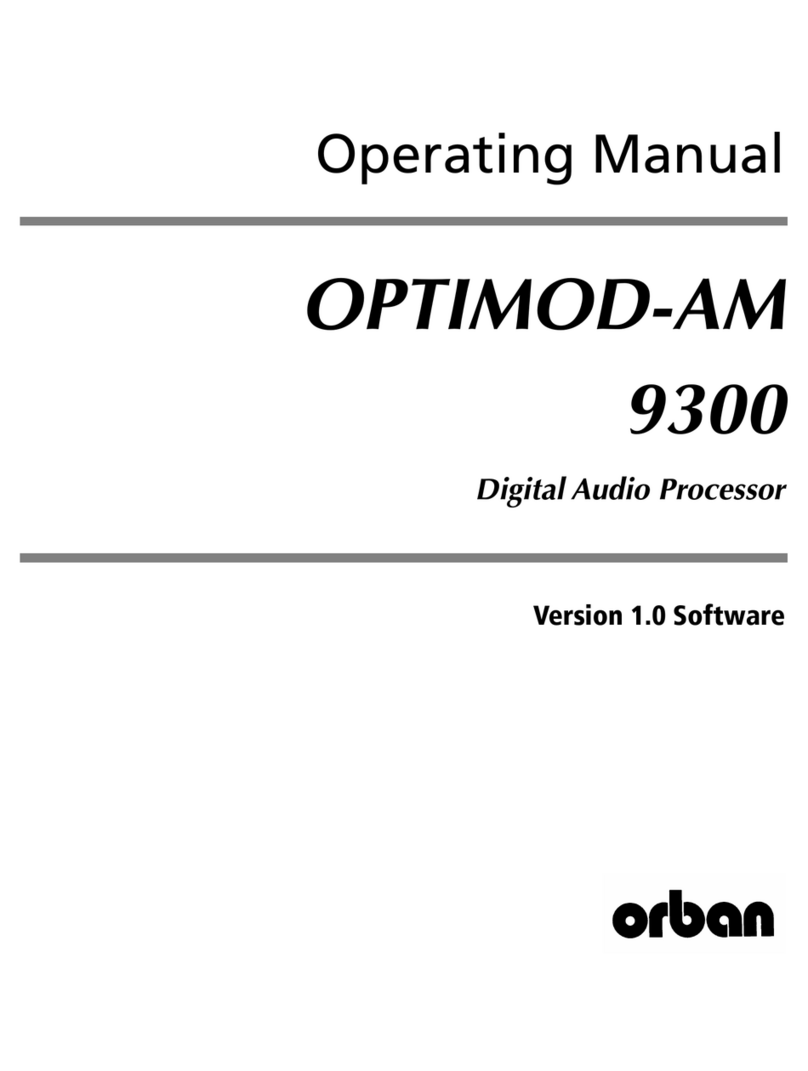
Orban
Orban OPTIMOD-AM 9300 operating manual

Intel
Intel Core 2 Duo Processor installation instructions

Krell Industries
Krell Industries Digital-to-Ana|og Processor STUDIO Owner's reference
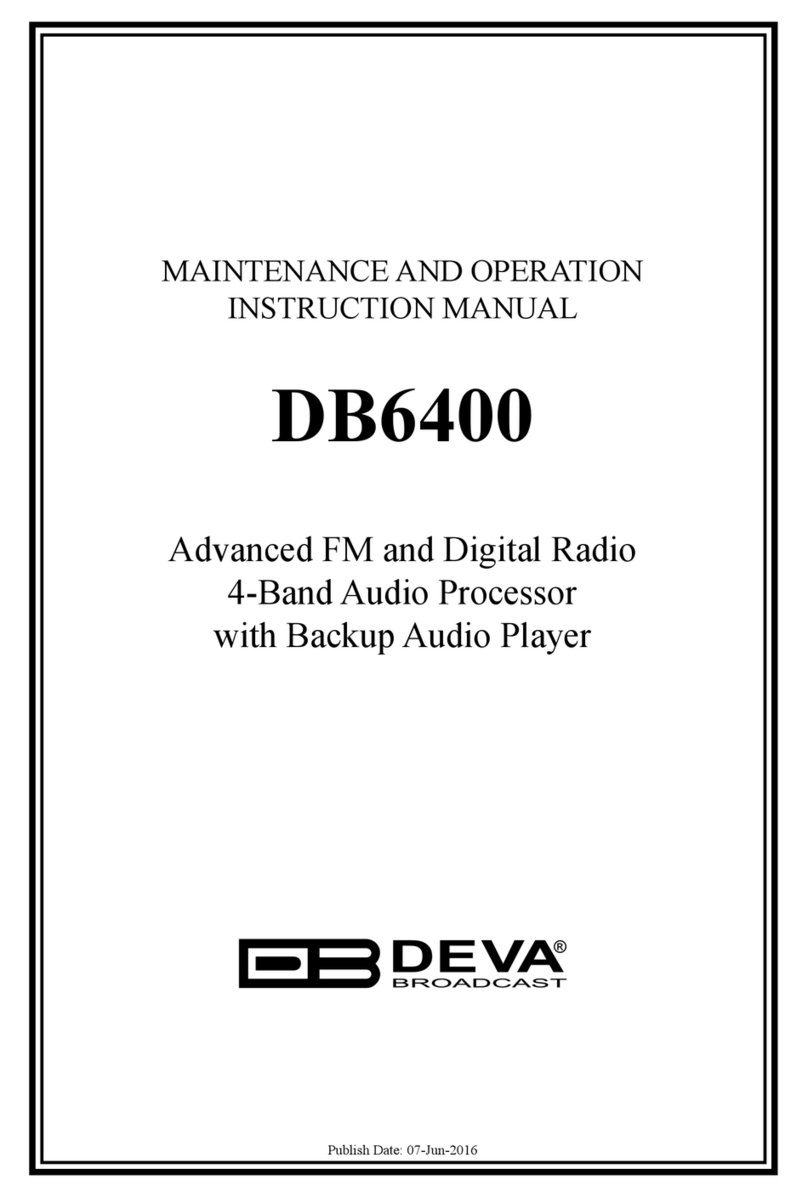
DEVA Broadcast
DEVA Broadcast DB6400 Maintenance and operation instruction manual
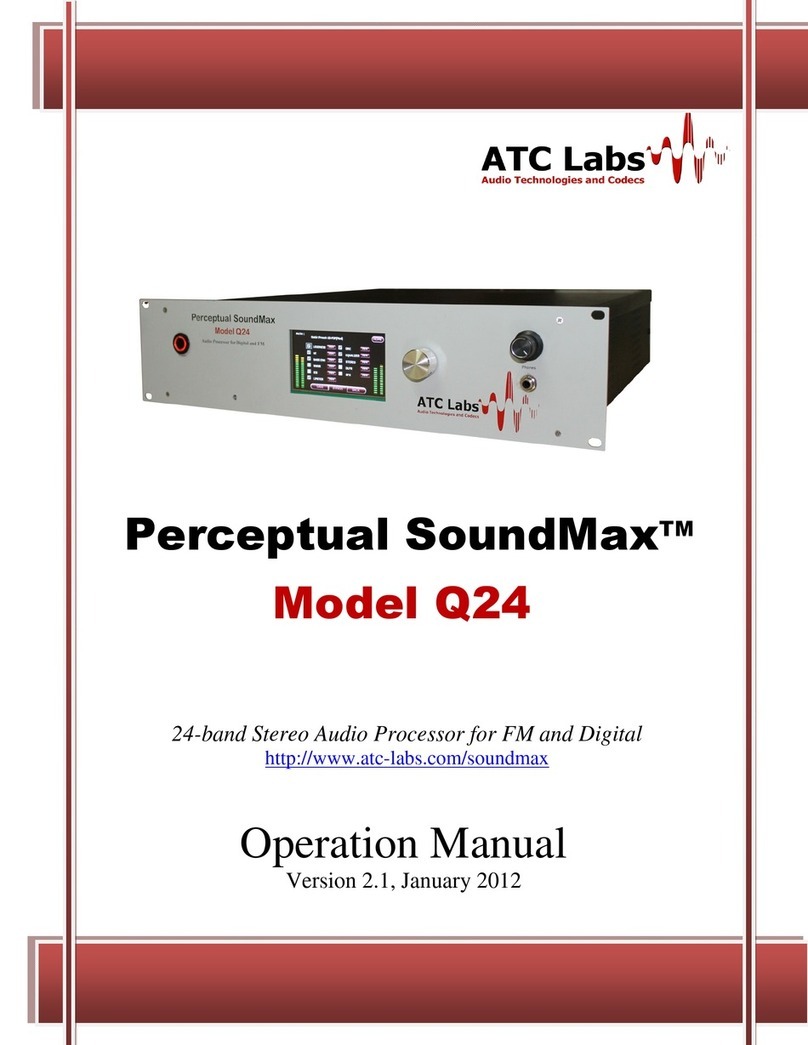
ATC Labs
ATC Labs Perceptual SoundMax Q24 Operation manual

Portwell
Portwell ROBO-625 user manual
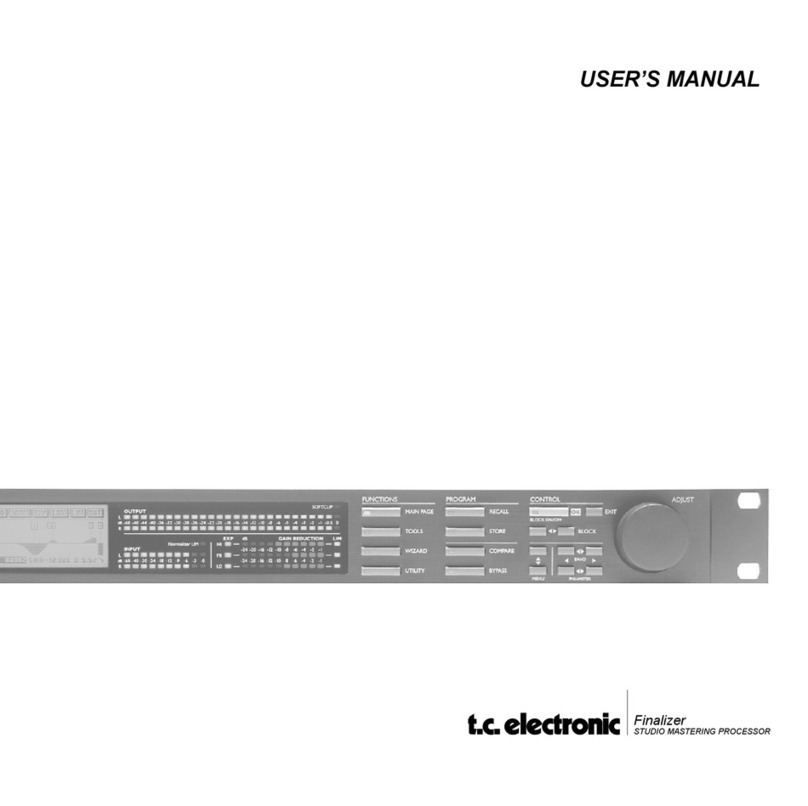
TC Electronic
TC Electronic Finalizer user manual
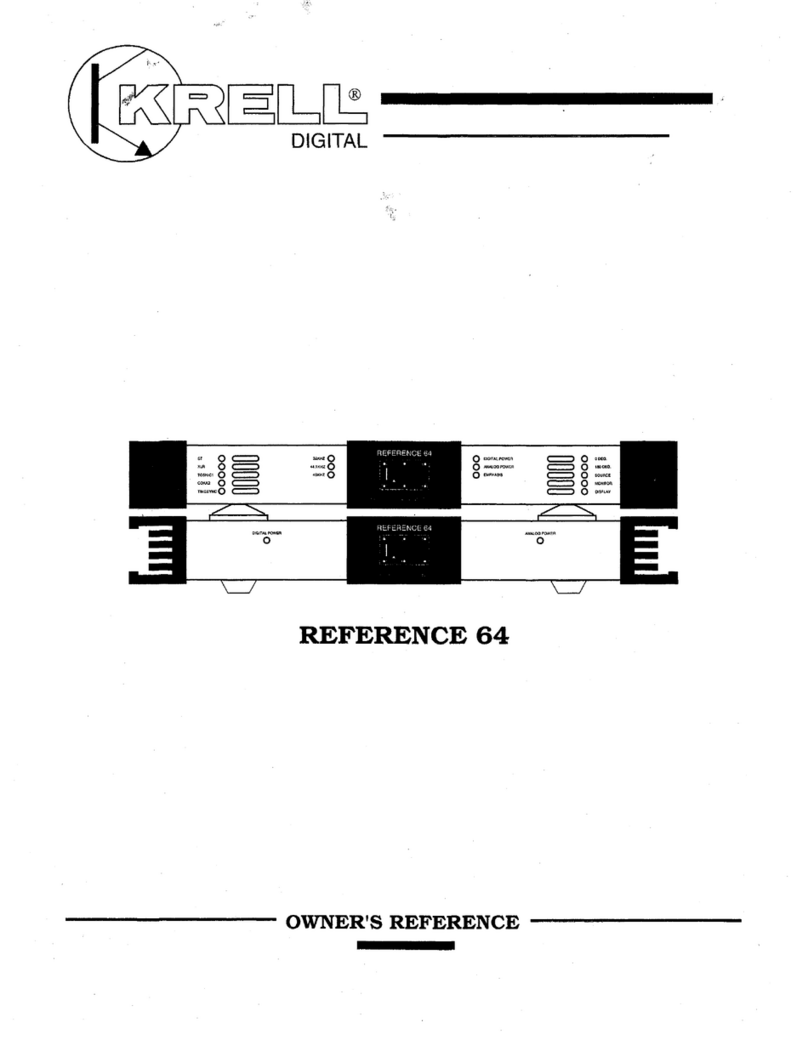
Krell Industries
Krell Industries Digital-to-Analog Processor REFERENCE 64 Owner's reference
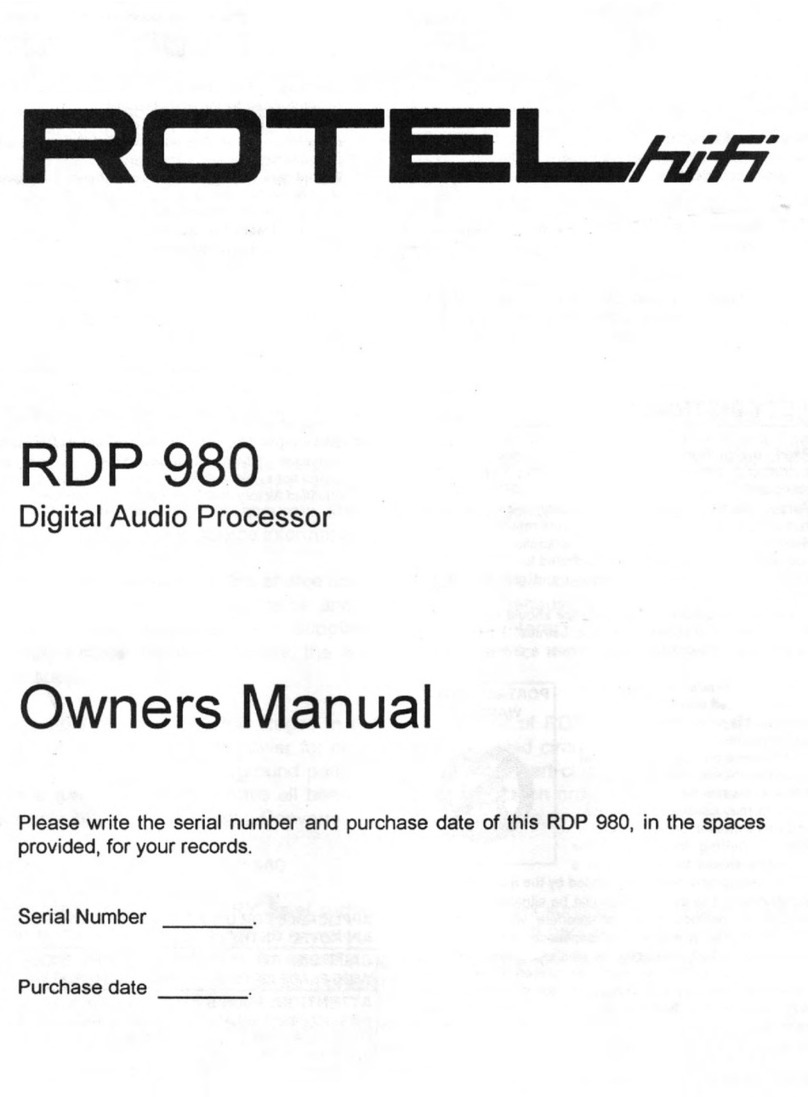
Rotel
Rotel RDP 980 owner's manual
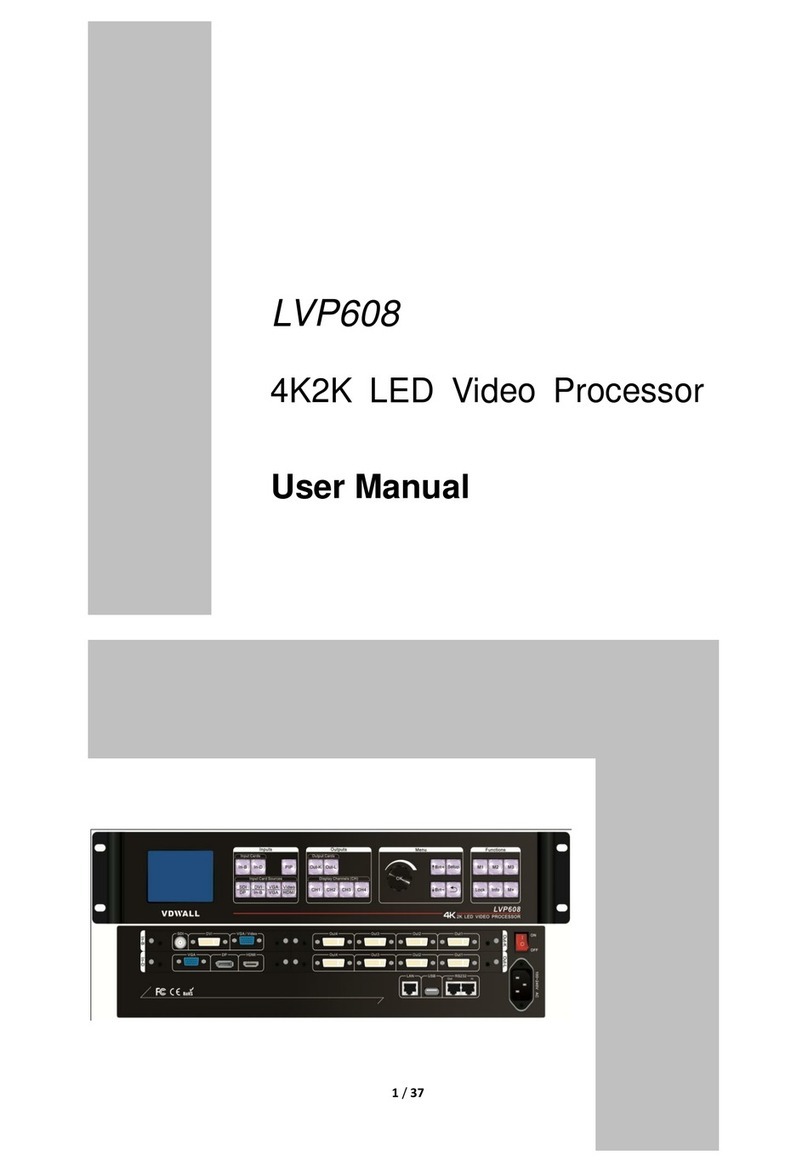
Vdwall
Vdwall LVP608 user manual
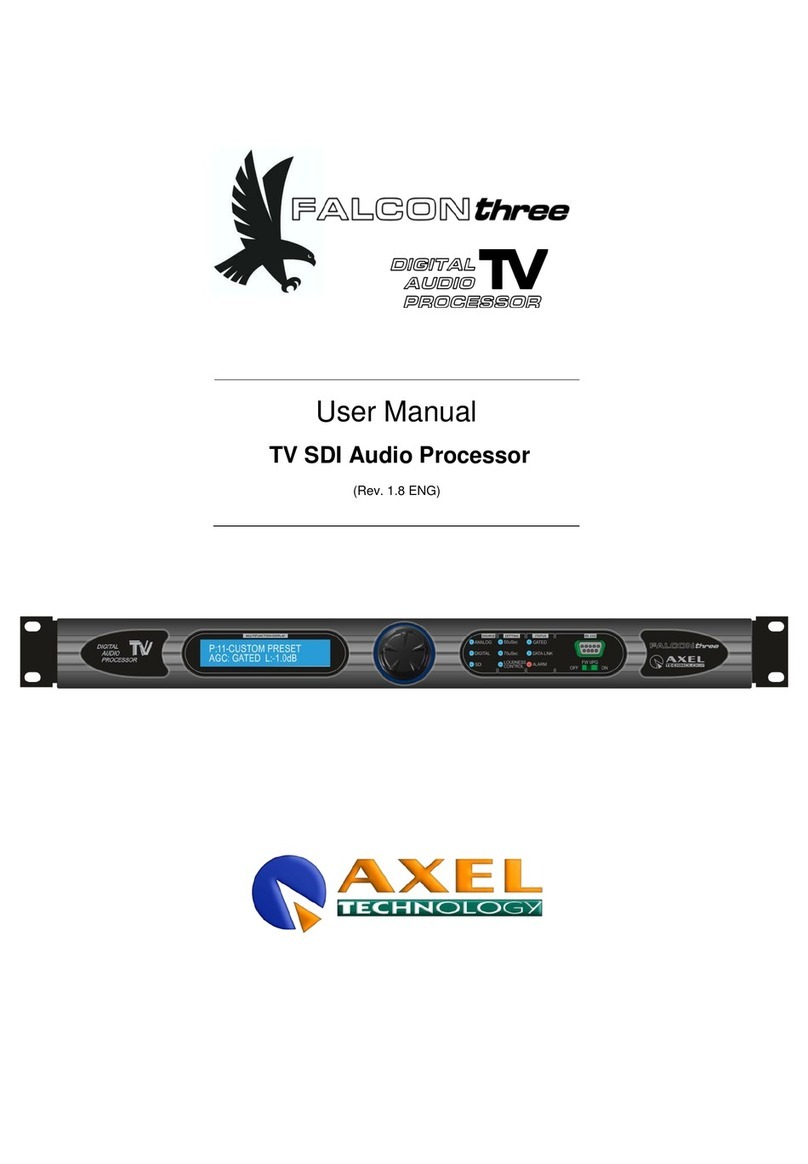
FALCON THREE
FALCON THREE TV SDI user manual
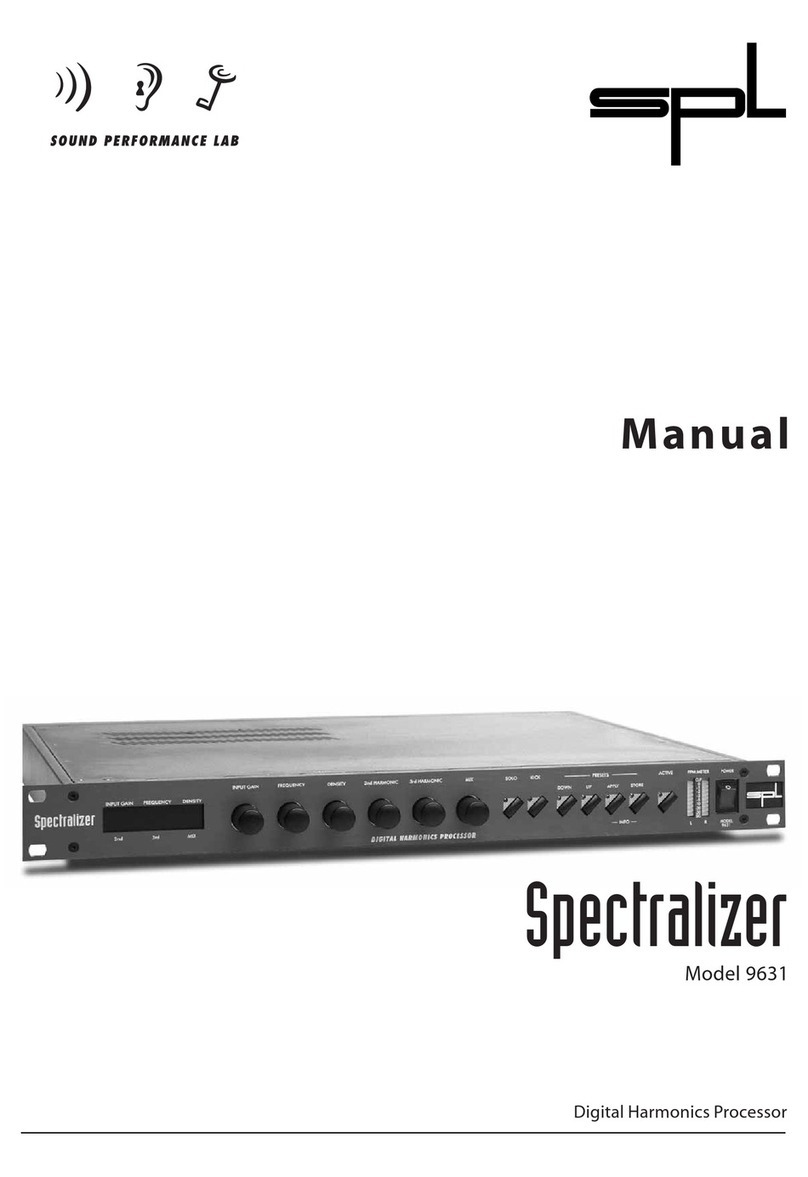
Sound Performance Lab
Sound Performance Lab Spectralizer 9631 owner's manual
